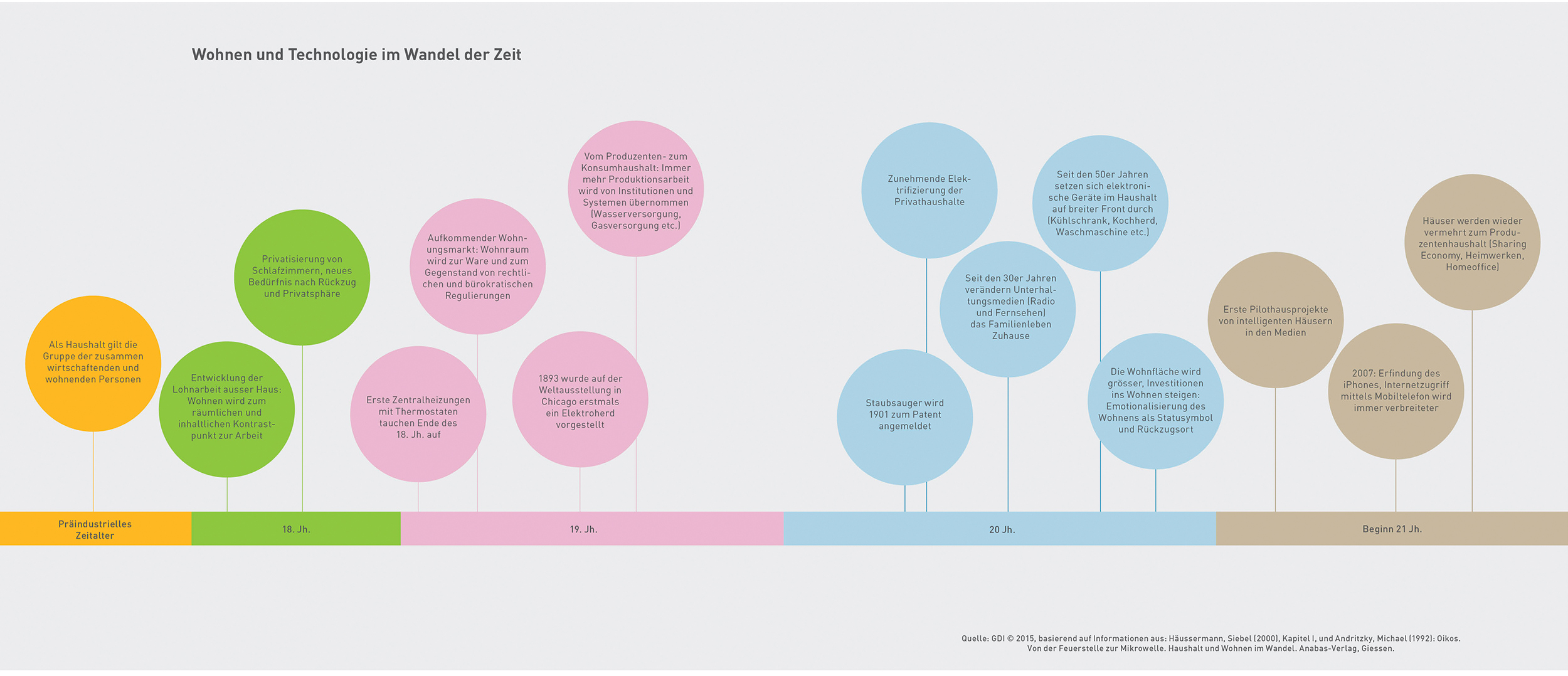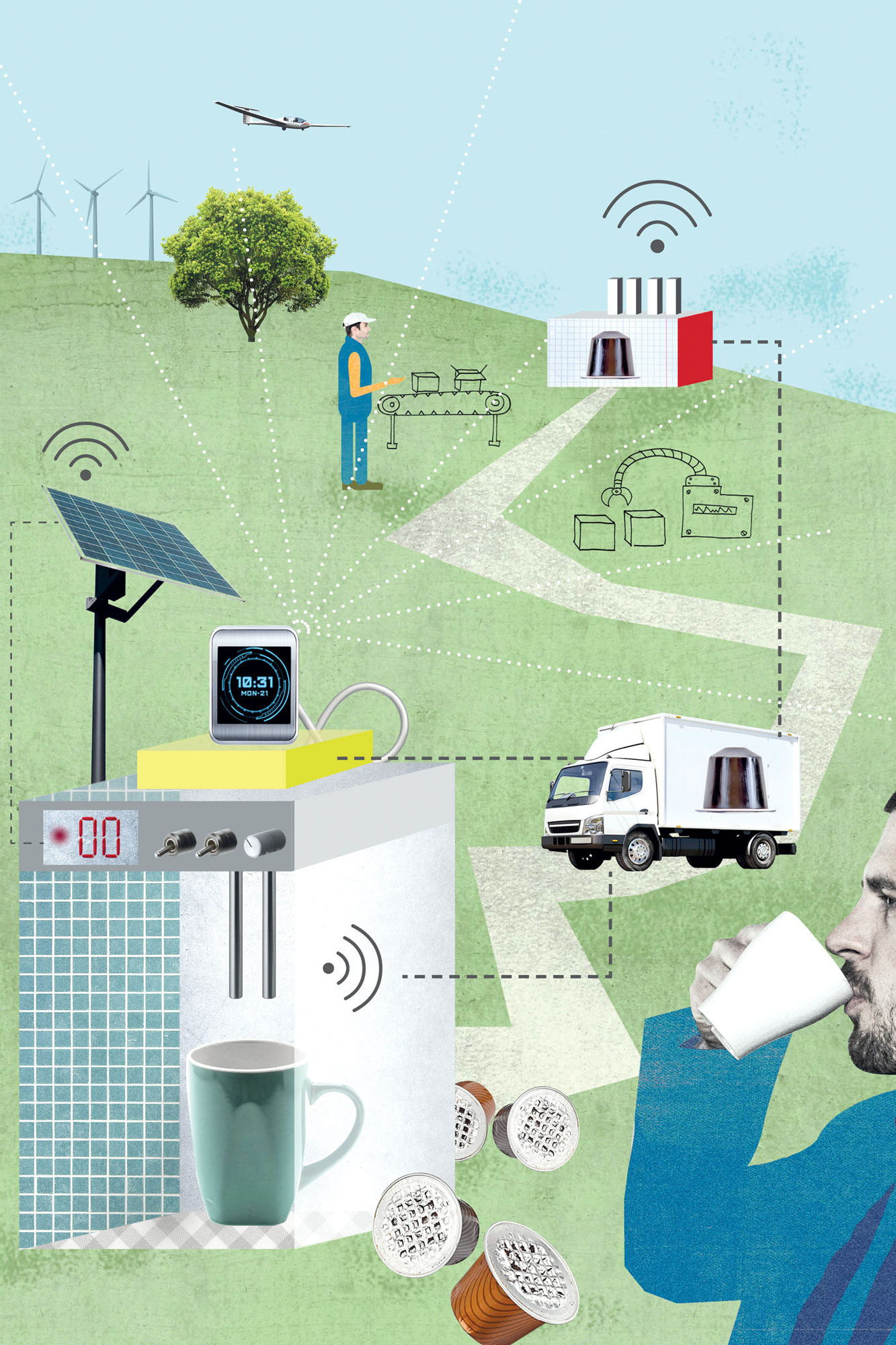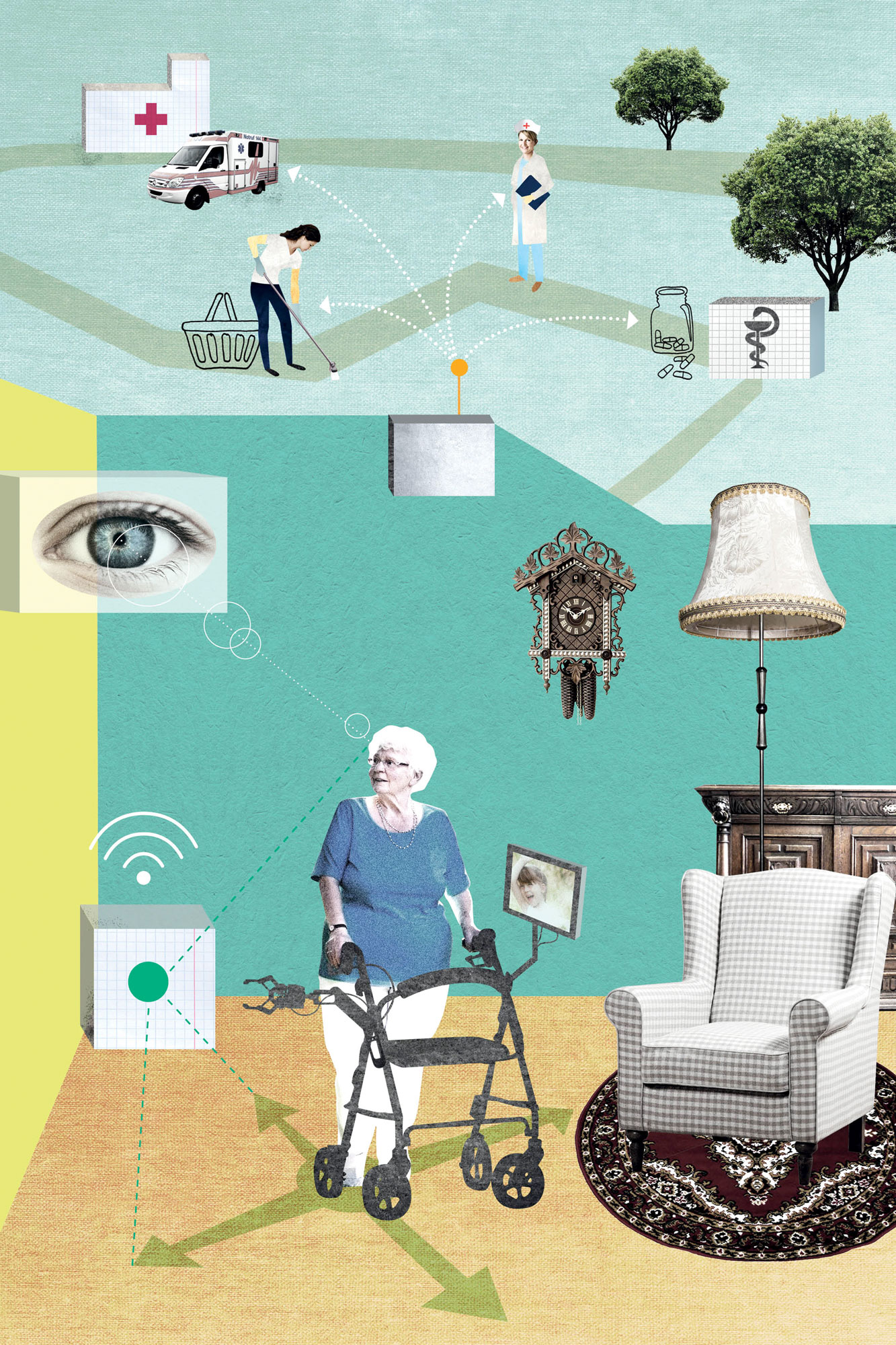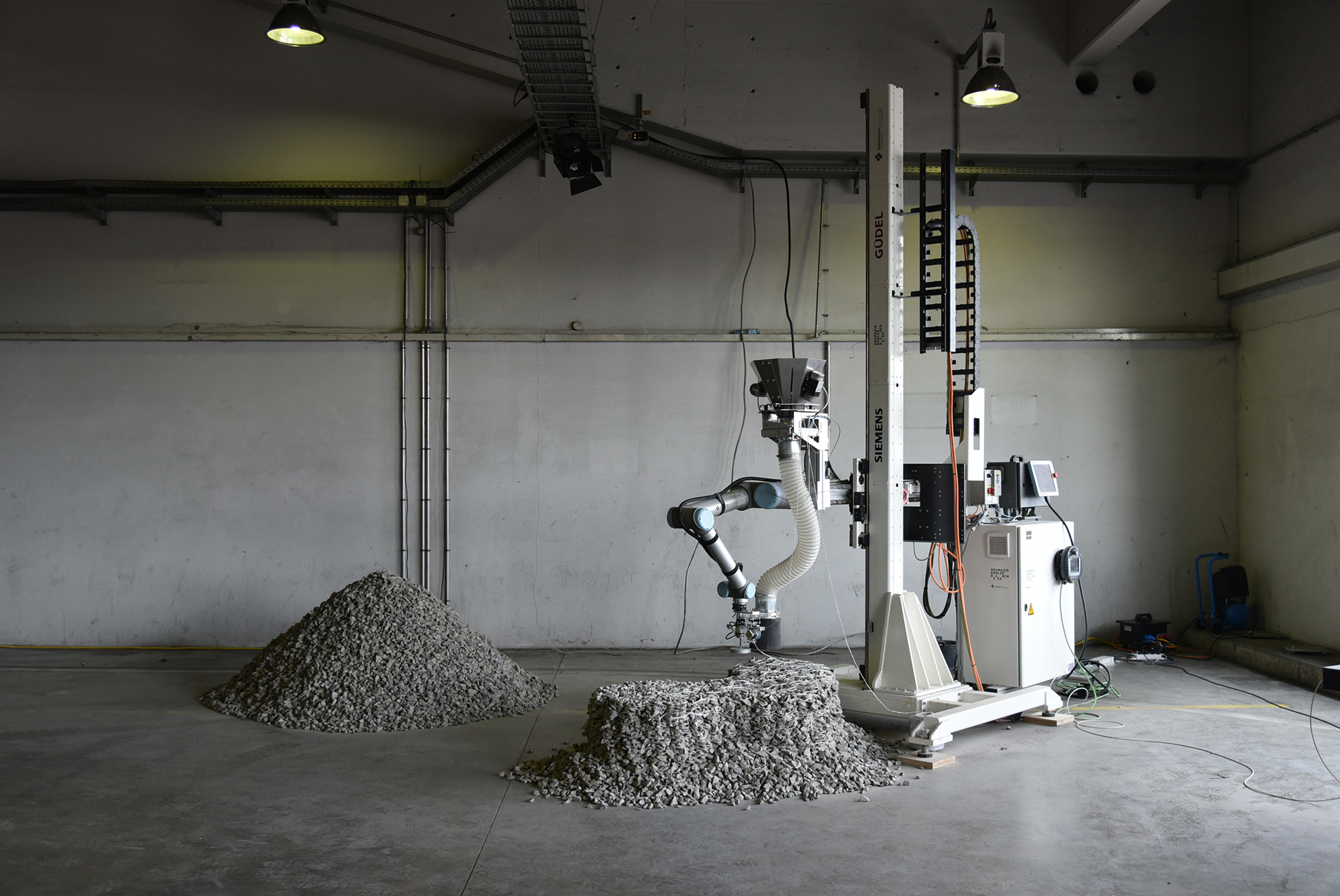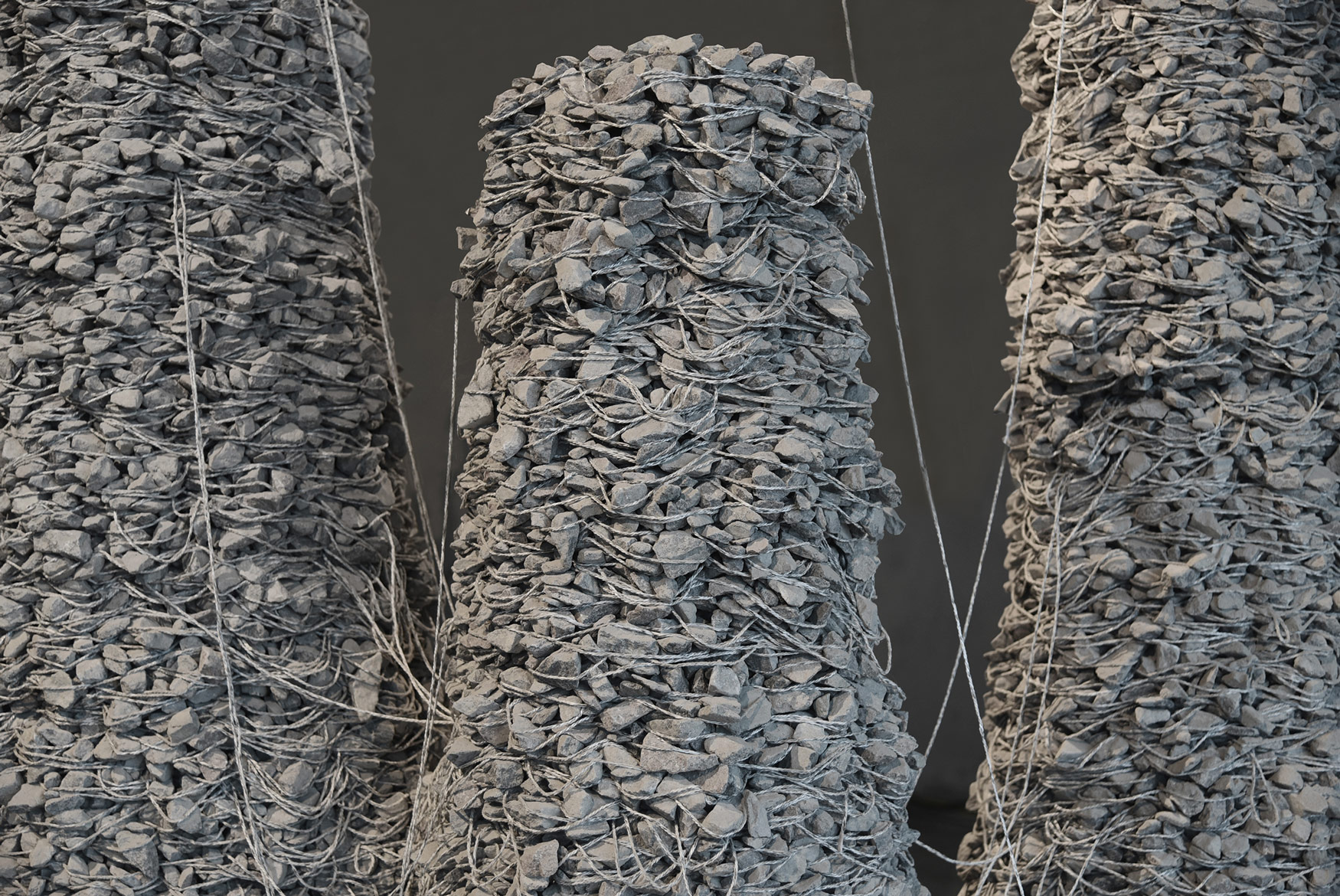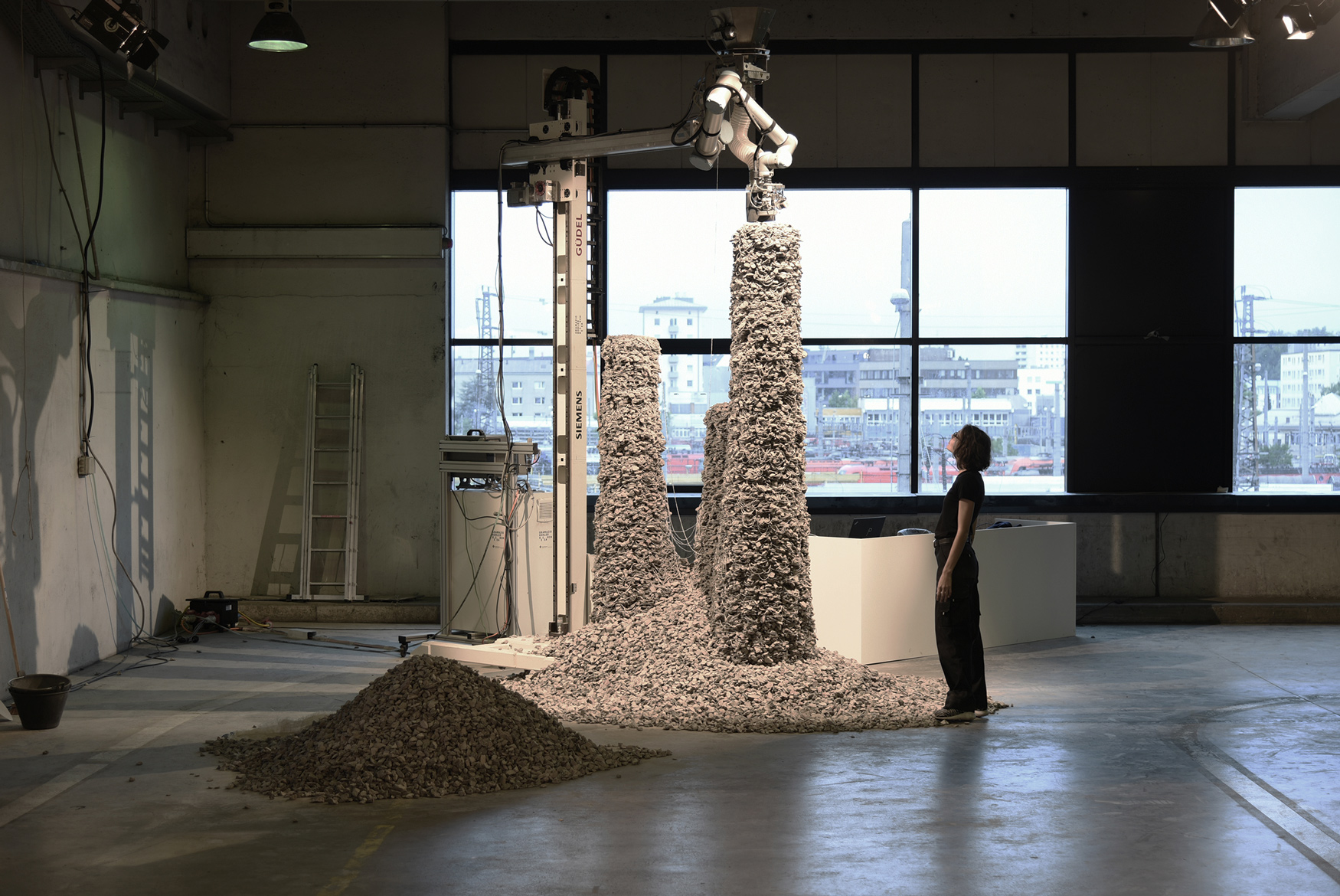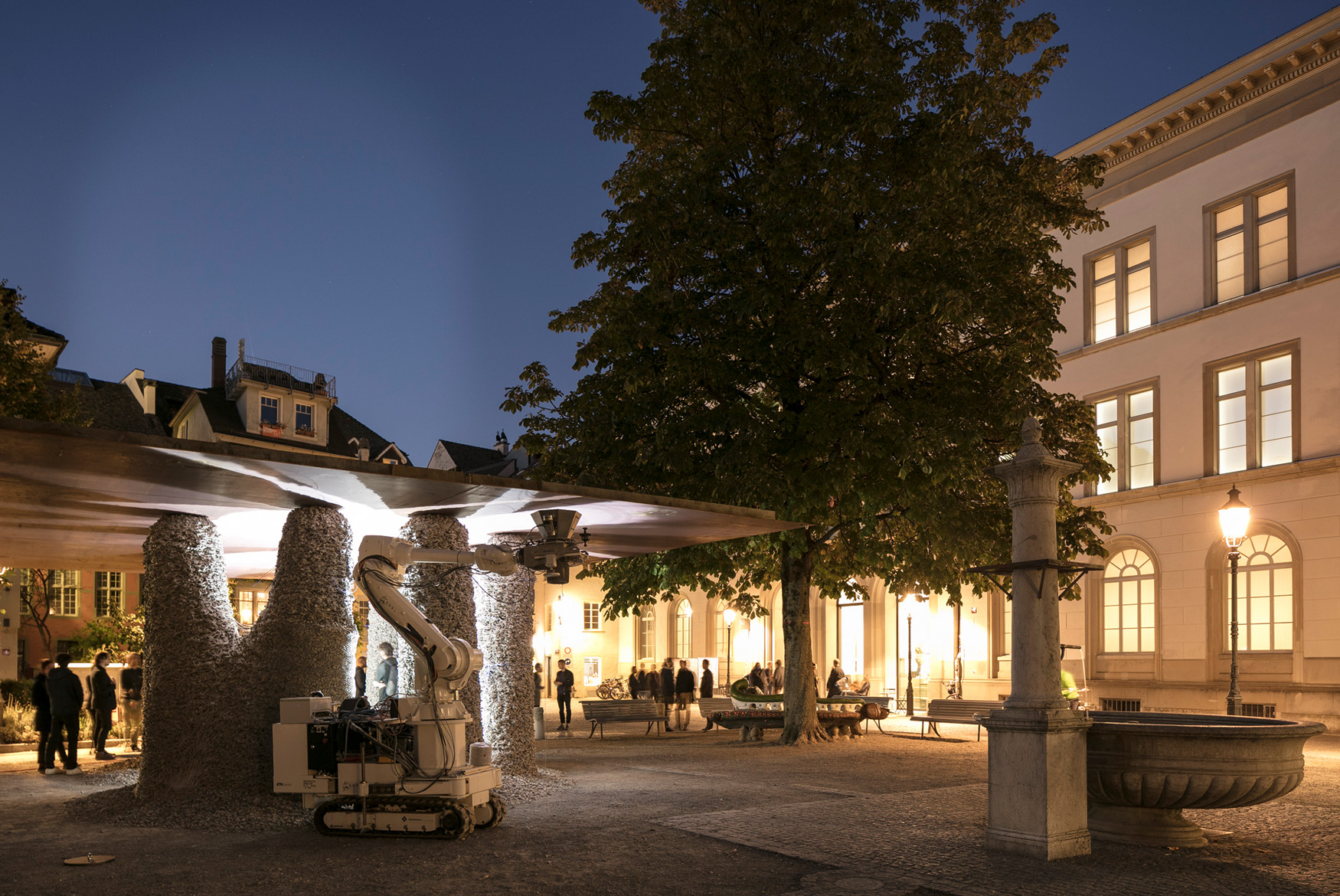How digitalisation is changing living and building
Perspectives
Giulia Bernardi • 11.12.2018
Digitalisation has also changed the interior design and building industry. New areas of activity are being created as a result, which we should talk about.
«Okay Google, please phone Isa…» New technological developments have already revolutionised various sectors, including the interior design industry. This was already the case at the end of the 18th century when the first central heating systems with a thermostat were introduced in Europe. It carried on during the first half of the 20th century when the electrification of households took place and an increasing number of electrical appliances were used from the 1950s onwards – from the oven to the washing machine. On the one hand, interiors changed within our own four walls and on the other hand so did the requirements: Nutritional habits such as hygiene expectations were fundamentally shifted and were guided by what the new technological developments had to offer.
Quo vadis, digitalisation?
By observing the previous changes, the question arises as to how our living arrangements will be structured in the future. «In general we will be more careful about applying new technological developments within our own four walls», believes Liv Christensen, a social scientist and employee at ETH Wohnforum. «However, this doesn’t mean that digital technology won’t be used there at all, on the contrary: It will above all be used when it simplifies or personalises the way we live.»
This theory is confirmed by services such as the ‹Dash Replenishment Service› from Amazon. Intelligent sensors are attached to a container, such as a pack of soap powder. As soon as the content is running low, the sensor will send a message to the user’s Smartphone and automatically order the relevant product – if this is desired – on Amazon. Such a service usually corresponds to social needs, such as the requirement for the so-called «Instant Economy», in other words the desire for immediate availability of a product or service.
Pluralisation, namely establishing new models of living and family, also has an influence on the direction, which the digitalisation of the interior design industry will take. This trend will then also be emphasised by the large number of single person households: They have increased steadily in Switzerland since the 1930s and currently account for about 36 percent of private households. «The need for individualised ways of living is also increasing through individualised lifestyles», says Liv Christensen.
«We would like neutral, flexible rooms, which can be adjusted to requirements and the situation. I could imagine that in the future there will be intelligent wallpapers, which can for example change colour or walls produced by 3D printers, which can be moved about as desired.»
Demographic change, including an ageing society, is also requesting new models that will enable people to live independently for longer. The iHomeLab research centre at Lucerne University of Applied Sciences and Arts is investigating this area and working on various projects in the field of building intelligence to improve the life of the elderly but also people with disabilities. As part of the ‹Pontis› pilot project for example, it is being investigated how a TV can be controlled by brainwaves alone.
On the one hand the lives of individuals are to be improved through new technology and on the other hand life in society as whole. The American ‹Next Door› social media network was developed for this purpose, which is soon also to be launched in Switzerland. It acts as a platform, on which neighbours in a district can get to know each other, ask each other for advice or borrow things from each other. «This is how new forms of participation and community are created», explains Liv Christensen. «Through such platforms people increasingly see themselves as part of a district or a town. Borders between living, working and leisure are increasingly merging with each other.»
Robots, which build things?
Similar to the interior design industry, digitalisation has also opened up new areas in the building industry. In this connection, the application of 3D simulations which already started at the turn of the century, such as Building Information Modelling (BIM), should be mentioned. The software enables digital models to be established, which are much closer to reality than a one- or two-dimensional drawing.
Fabio Gramazio and Matthias Kohler are looking at new approaches to planning and building. One of the latest procedures from Gramazio Kohler Research is called ‹Eggshell› and is intended to optimise the production of non-standardised reinforced concrete constructions. «Concrete is used in many areas because it is a very efficient material, which can be made into any shape», says Fabio Gramazio, Professor for Architecture and Digital Manufacturing at ETH Zurich.
«The shape depends on the mould, which at the same time also represents the greatest problem. This is because it is often disposed of after being used just once.»
© Gramazio Kohler Research, ETH Zurich
In order to make production more sustainable, at ‹Eggshell› 3D-printed, re-usable moulds are being designed, which can be used for moulding concrete building components. «If I want to use just a little material for something, I need a complex mould», explains Gramazio. «This is particularity important for materials such as concrete, which contains cement and therefore requires a lot of energy in production.»
New approaches have also been tried out as part of the ‹Rock Print Pavilion› installational project, which could be seen in October and November on Kirchplatz near the Gewerbemuseum in Winterthur. A mobile robot built a pavilion from rubble and rope; the architecture achieved a high level of stability through the targeted build-up of the material and its interlocking properties. It was also helped by the external loading through a steel roof, which was positioned above the columns made of rubble and rope. This phenomenon which is known from physics is called jamming. «Although it’s not an actual building procedure, the installation contains fundamental research questions», says Fabio Gramazio. «The latest priority is the separability of material. One must not only be careful to use as little material as possible, but also use little adhesive and not mix it up very much so that it can be re-used.»
In response to the question of whether digitalisation will also revolutionise the building industry, Gramazio states: «There will be more changes. However, one can’t compare this transformation with the one that has occurred in the film or mobile phone industry. The building industry is extremely complex: It has lots of interfaces with reality, which must be taken into consideration.»
A positive narrative
Society’s attitude has a significant influence on the establishment of new technologies. According to a representative survey by the Gottlieb Duttweiler Institute (GDI), which was carried out as part of the ‹Smart Home 2030› study, there is still a certain reticence in the interior design and building industry in Switzerland. Merely 34 percent of architects and building engineers acknowledged that the subject of intelligent living was important in their company. Building technicians were represented most strongly with 53 percent. This distanced attitude is also reflected on the part of customers. According to the providers surveyed, the demand exists above all in the areas of home technology, security as well as in audio and multimedia, in other words in those fields where automation has already been taking place since the 20th century. «Our own four walls are often regarded as a refuge from the fast-paced, digitalised world», thinks Liv Christensen. This means that the increasing transparency through sensors is often considered to be awkward, which is also referred to by the Gottlieb Duttweiler Institute.
Fabio Gramazio has also observed a certain reticence in the building industry. «The discussion regarding the end of work is virulent. There will be a change in structure and it will be painful. However, a change in structure is part of cultural development, which should be accompanied by careful discussions.» Nevertheless, according to Gramazio, this discussion currently contains a mistaken way of thinking because it is being held from the perspective of the 20th century; in other words from a Marxist perspective, in which the machine belongs to the capitalists and the workers are alienated from the work process, similar to what happened in the car industry. «This creates tension between people and machines», says Gramazio. «A complex machine depends on people. This attitude permits a reconciliation between the two sides. It’s a positive narrative of equals and I think that it has much more to offer.»
The interior design and building industry are therefore also facing a structural change, which will open up new areas and should be accompanied by a careful discussion. This is because the question is not whether changes will occur, but how we want to handle them.
Illustration/Photography: Gottlieb Duttweiler Institut, Michael Lio, Gramazio Kohler Research
